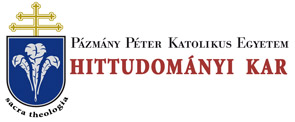Folia Theologica 1. (1990)
Péter Erdő: The Theological foundations of Canon Law according to the works of John Henry Newman
THE THEOLOGICAL FOUNDATIONS OF CANON LAW 123 perhaps appropriate to mention some fundamental structural elements of the Chruch that have a juridical character. II. Structural elements of the Church with juridical character 1. The Roman Pontificate and the episcopate On the basis of the principles described above, Newman identifies some substantial elements of the structure of the Church. The Church as a monadic and sacramental unity, a divine institution and a political community is found in that society whose visible head is the Roman Pontiff.42 This conviction of the Catholic Newman is based on arguments that throw light also on the special juridical character of such an institution. The presumption of the author in favour of the pontificate is composed of two elements: one is the well known history of the Church after the Council of Nicea, the other is the probability a priori of the pontificate, or rather, of the petrine office because of the necessity of a monarchical power in the Church. Strating from the principle according to which "the larger the body, the more concentrated must the government be" 43, and keeping in mind that the pontifical power was developed at the same pace as the growth of the Church, one comes to recognize the necessity of the institution of the pontificate. On the other hand, from a more theological point of view, Newman does not know of another way to preserve the sacramentum unitatis than by a centre of unity.44 Moreover, he accepts as an element of faith that the pontificate was from the beginnig a determined element of the Church and decreed by God.45 To the question of whether it is possible that the prerogatives of divine grace could be annexed to a particular office, our author, in 1862, replied in the affirmative - basing his answer on those scriptural texts that speak of the "chair of Moses" (Mt 23: 2-3) and of the prophetical gift of the High Priest of the Jews (Jn 11: 51).46 42. Diff II 208. 43. Dev 154. 44. Dev 154-155. 45. Dev 148-150. 46. LD XX, 308.
